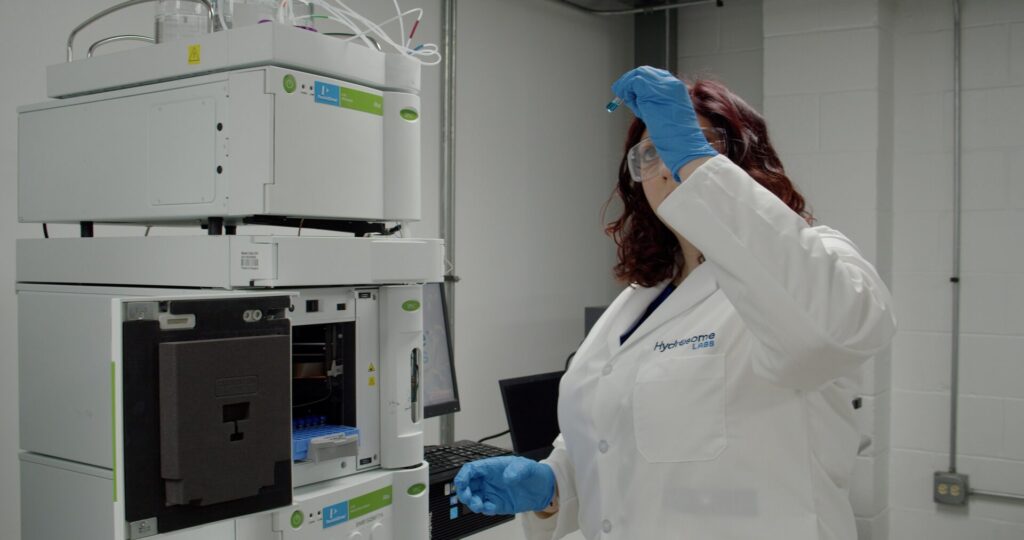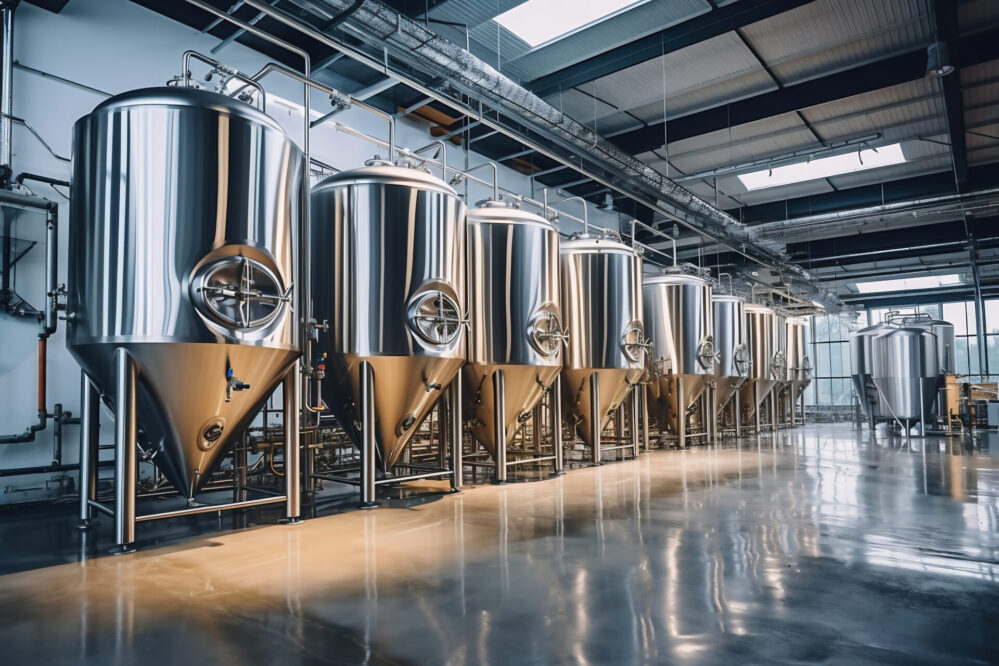Thanks to their unique properties, ultrafine bubbles (a.k.a. ‘nanobubbles’) are gaining traction in everything from indoor farming to wastewater treatment. But new research suggests they could also deliver dramatically higher yields in precision fermentation operations, claims Hydrosome Labs.
Ultrafine bubbles—Hydrosome Labs’ are between 20-150 nanometers across—exhibit very different properties to bubbles perceptible to the human eye, from neutral buoyancy to a strong negative surface charge and a high surface area to volume ratio, says the Chicago-based firm.
In indoor farming, where the tech has gaining traction in recent years, this translates into better nutrient absorption and higher yields. In a fermentation tank full of microbes, the same principle seems to apply, Hydrosome Labs EVP Bob Jacobs told AgFunderNews.
Testing with E.Coli strains at the Integrated Bioprocessing Research Laboratory (IBRL) at the University of Illinois Urbana-Champaign has shown that substituting regular water with water containing ultrafine bubbles can boost cell doubling rates 2x, increase peak cell biomass 2x, and reduce fermentation time by 25%, which translates to higher yields and lower costs, said Jacobs.
“We’re working with a number of indoor controlled environment ag growers, mostly in the cannabis space, but we think there’s a big opportunity in the short term in fermentation, and we’ve seen great results with E.Coli strains and yeasts such as Pichia pastoris and Saccharomyces,” he added.
High surface area to volume ratio
According to Jacobs: “We know from the literature and from other work that’s been done that these ultrafine bubbles have a negative charge on the outside and they attract water soluble nutrients to their surface.
“As the surface area of these bubbles in solution is huge—you can fit a trillion of our ultrafine bubbles into one champagne bubble—that has an incredible compounding effect on the surface area that’s available to deliver nutrients to cells.
“Our bubbles are not governed by buoyancy [ie. they don’t float to the top]; they float around in solution and when they encounter a cell, the cell recognizes those nutrients that are outside the cell and brings them in. We believe that includes the gases that are inside the bubble as well, but there’s ongoing research to determine exactly what’s being transferred across the cell membrane.”
Hydrosome Labs’ process can work with different kinds of gases, he said: “We can add different types of gases inside our bubbles. So you could put pure oxygen inside the bubbles or nitrogen or carbon dioxide. We’re scaling our capability to do that as we speak.”
Not all tiny bubbles are the same…
So how does Hydrosome Labs’ tech compare to that of other players creating tiny bubbles such as Moleaer? And if the benefits are so clear in biomanufacturing, why isn’t every player in the nanobubbles space working in the precision fermentation arena?
According to Jacobs, “There are a couple of issues. One is stability. In some cases the literature shows that these tiny bubbles might only last for a few days. In contrast, we create a stable form of ultrafine bubbles and we have data showing they last beyond two years, which opens up new categories like personal care, beverages, and precision fermentation.”
The second issue, when it comes to precision fermentation, is making sure you don’t damage the cells [that have been engineered to produce your target product], he said.
“Some players in this space use higher shear forces to create their bubbles, which can damage the cells, whereas we use a gentler process called hydrodynamic cavitation. We’re essentially spinning the water and creating a vacuum inside of our unit [which would be leased to biomanufacturing companies]. When the water exits our device, that cavitation core vacuum is disrupted, and that’s what creates the trillions of ultrafine bubbles.
“This means we can pass that liquid [fermentation] media, cells and all, right through our process and create the bubbles without damaging the cells. Our bubble sizes are also smaller [than those created by other players in the ultrafine bubbles arena] which we believe delivers greater efficacy.”
He added: “In most of the cases that we’ve seen so far, if companies are doing a fed batch fermentation and already recirculating their solution through some kind of a pump system and putting it back into the bioreactor, our technology can easily hook up to that recirculation loop and add bubbles as that media is being recirculated in the tank.
“But we can also work with companies using batch fermentation processes. Here our technology can bolt on to the end of their reverse osmosis system [which purifies water before it’s used in the fermentation], feed bubbles into the water, and then into their batch.”

Cosmetics, functional beverages, indoor ag
Hydrosome Labs has granted and pending patents covering the making of its bubbles and their use in various applications, said Jacobs, who says areas of interest beyond precision fermentation include indoor ag, personal care, and functional beverages, where tiny bubbles can deliver superior hydration and absorption of nutrients such as vitamins, minerals, and electrolytes.
The bubbles can also be customized both in size and concentration, noted Jacobs. “We’ve got a lot of different levers that we can play with although there’s always a trade off with price, so we have to find the sweet spot for every customer.”
To date, Hydrosome Labs has secured $6.3 million in seed funding mostly via friends and family, and is currently raising its Series A, he said.
“It’s a new area, so it’s been important [to potential investors] that there is science backing up our claims. We also have beauty care customers in various stages of trials and a partner who’s launching in a month with our water in their formulation after extensive clinical testing that has shown benefits [ultrafine bubbles are claimed to improve hydration and increase uptake of vitamins, antioxidants, and other nutrients to the skin].
“There is an acceleration of interest in this category and the number of peer-reviewed publications on this technology is growing fast. The fact we have robust patents covering our technology is going to be very important, as I expect we will see a lot of new players enter this space.”




